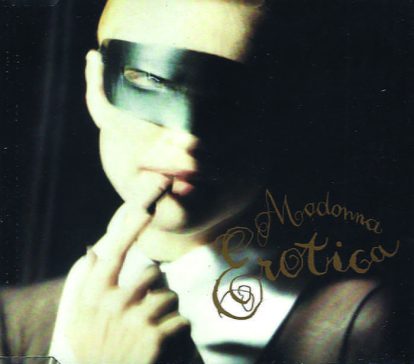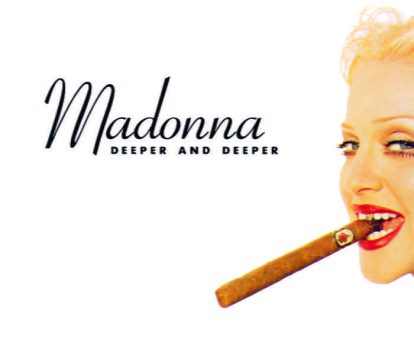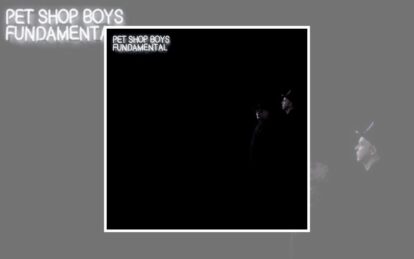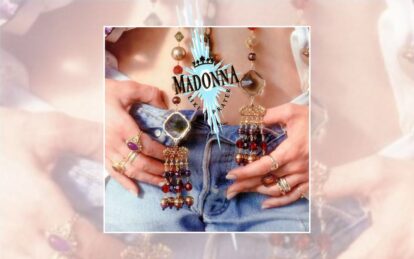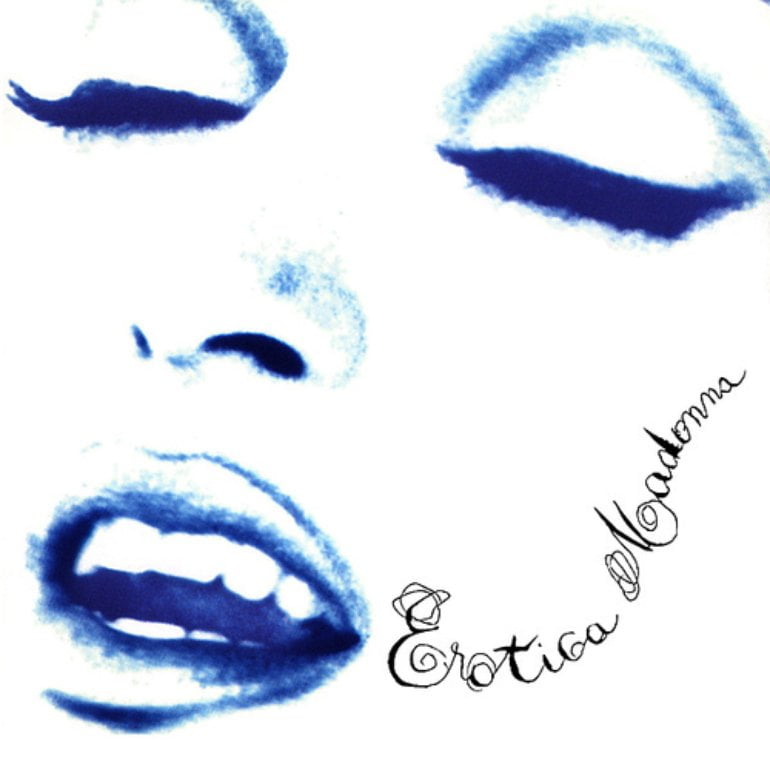
Madonna Erotica
Misunderstood and overshadowed by her own marketing machine, Madonna’s fifth album Erotica stands out as one of her most daring and rewarding endeavours
Prior to The Immaculate Collection, Madonna’s decade-defining distillation of perfect pop, greatest hits albums were pretty much regarded as a full stop signalling a career nearing its end.
However, when the pop icon agreed to release a singles compilation in 1990, she was insistent on including new music too – a concept unheard of at the time, as affirmation that hers was very much a story so far.
The inclusion of two new tracks, Justify My Love and Rescue Me, were to prove tantalising teasers of the sonic landscapes she would explore further on her next studio album.
The Lenny Kravitz- and Andre Betts-produced Justify My Love showcased her seductive vocal confidently straddling a hip-hop beat, while the uplifting gospel house track Rescue Me saw Madonna reuniting with Shep Pettibone.
Pettibone had been remixing her work for several years, but it was his reworking of 1989’s Express Yourself, on which he built an entirely new track around Madonna’s vocal, that proved a turning point.
She loved the result so much that Shep’s version was pushed as the single mix and convinced her to involve him at a more fundamental stage in her next work. They went on to create Vogue and Rescue Me with plans firmly in place to collaborate further on her next studio album.
Even though it would be two years before that body of work was unleashed onto the world, Madonna’s stranglehold on pop culture showed no signs of abating thanks to a string of boundary-breaking endeavours including the risqué Justify My Love promo video, with its inclusive depiction of the entire spectrum of sexuality, and Truth Or Dare, an unflinchingly honest documentary portraying her life on the road during her blockbuster Blond Ambition Tour.
It is an intimate moment between Madonna and her backing singers captured in the documentary in which Madonna explains her ethos.
“I know I’m not the best singer and I know I’m not the best dancer,” she says. “But I’m not interested in that, I’m interested in pushing people’s buttons and being provocative and being political.”
It is a perfect explanation for the release of the Erotica album and Sex book in October 1992 – defining a pivotal moment in which she proved she was prepared to risk commercial success in favour of social and sexual political agitation.
Work on Madonna’s fifth studio album began tentatively in July of 1991 whilst she was in Chicago filming baseball movie A League Of Their Own.
Having asked Shep Pettibone and Andre Betts to send her cassettes of song sketches she could write to, work got off to a slow start due to Madonna’s hectic work schedule and her loathing of working remotely.
Aside from shooting A League Of Their Own, she was preparing to shoot Body Of Evidence and was in the process of setting up Maverick – her own entertainment production company which would distribute music, films, books and merchandise.
Renowned for her workhorse stamina, Madonna began work on the album in earnest in October of 1991, allocating sessions around her other projects.
A couple of weeks in Pettibone’s home studio informed the direction for the album with early versions of Thief Of Hearts, Rain, Deeper And Deeper and Erotica demoed.
As Madonna split her time between her other ventures, Shep worked on the material they had so far, presenting the tracks to Madonna upon her return.
“I hate them,” was her response, Pettibone wrote on his website. “If I wanted the album to sound that way, I’d have worked with [long-time collaborator] Patrick Leonard in L.A.”
Shep’s glossy sheen and pristine production were the antithesis of what Madonna envisioned for the lo-fi sound of the album and the tracks were given a make-under to encapsulate the required untouched, gritty quality.
“We wanted to keep the sound raw on the album by not producing it too much,” Madonna explained to MTV. “When we wrote the songs, we made 8-track demos and kept the songs as true to what the inspiration was when we were writing.
“We didn’t want to take those 8-track demos and take them over to 24-track and re-do them better. We said, ‘Ok this is good enough, let’s keep them as they are’. With the exception of a few minor overdubs, what you hear on the album is the songs as they were in their original demo form and that’s why they sound so raw.”
As the sessions were conducted sporadically over the course of the next year, the long gestation period allowed for a shift in tone.
While early songs dealt largely with the complexities of love, heartbreak and relationships, as Madonna progressed with her book, Shep persuaded her to incorporate some of that project’s personality into the music too, resulting in the album’s sexier moments.
Further down the line, Madonna became much more introspective and sombre, and that emotional shift informed the melancholic mood of Bad Girl (self-destruction), In This Life (AIDS) and Why’s It So Hard (social injustice).
- Read more: Album By Album – Madonna
One of the most poignant tracks to emerge during these sessions – which didn’t make it onto the album, was the reflective This Used To Be My Playground, a string-laden lament to lost love used as the theme to Madonna’s hit film A League Of Their Own.
No sooner had that song become a huge hit round the world in the summer of 1992, that the rumblings of a media storm began when countless tabloid pics surfaced featuring a fully nude Madonna on location in Miami shooting photographs for her book.
The publicity and outrage prompted by the images ignited months of pre-emptive scandal and speculation in the media which served as the perfect foreplay to the simultaneous release of Sex and Erotica.
Even though the album and book were separate entities, it is hard to judge them individually due to their launches being so intertwined. Their release was a risky move for Madonna not only in terms of how daring and outrageous they were, but also from a business viewpoint, as they were the first releases on her Maverick imprint.
Though some reviewers praised the album for its experimentalism and boldness, for many their view of it was skewed by the overwhelming presence of the accompanying lavish coffee-table tome.
Envisioned originally as a text-only collection of erotic fiction pitched to Madonna by publishers following Justify My Love, the Sex book germinated through conversations with friends – most notably the fashion photographer and long-time collaborator Steven Meisel, whom Madonna had been urging to publish a book of his own.
She was keen to put forth a volume which celebrated sexuality from a female perspective and would empower other women to feel more confident about their sexual desires and needs.
Ultimately, the pair decided to collate their ideas and release the book as a joint venture. Madonna would write all of the text, which took the form of short stories, vignettes and letters penned by her fictional narrator Dita Parlo (named after a German actress from the 1930s and which Madonna had used as a pseudonym to check into hotels for years) and Meisel would photograph her.
- Read more: Causing a commotion: the videos of Madonna
Sometimes the images alluded to the sexual fantasies she had written about and sometimes they were standalone portraits, casting Madonna in a variety of sexual scenarios, inspired by the work of Helmut Newton, Guy Bourdin and Robert Mapplethorpe.
Shot on location in New York and Miami, the graphic depictions of bondage and S&M which accounted for a large proportion of the book, were shot in New York’s hardcore sex club The Vault with the famed Chelsea Hotel, gay burlesque theatre The Gaiety and Meisel’s own studio also used.
The Miami shoots proved much trickier as they required a lot of public nudity and flouting of the state’s obscenity laws. Madonna was photographed hitchhiking on the Miami highway, eating in a pizzeria, filling her car at a gas station, straddling Naomi Campbell on the beach or cycling around the park, all while completely naked.
Meisel told how he would set up a shot, Madonna would jump out of the car, slip off the coat she was wearing to conceal herself, snatch a few frames then quickly jump back into the car and drive off to avoid public order offences.
However questionable many people found the content of the book, its artistry was undeniable. Meisel is a maestro behind the camera and his photography is flawless.
Likewise with art director Fabien Baron, who conceptualised the book’s presentation, housing it in aggressive steel covers to precipitate unrest while looking at it.
“I wanted the reader to think of it as a sex toy,” he told Vanity Fair. The book was intended to feel slightly forbidden and was sold sealed in an aluminium bag to conceal its contents until it had been bought.
The secrecy that shrouded Sex prior to publication had only heightened anticipation for its release. Madonna embarked on a promo blitz like no other, appearing topless on the catwalk at a Jean Paul Gaultier fashion show and gave countless frank interviews explaining herself.
Ever the stickler for detail, even her TV interviews were orchestrated to reference sexual liberation, with Madonna’s attire referencing the decadence of 1930s Berlin in the androgynous drag of Marlene Dietrich or in hippie garb to reference the sexual revolution of the 1960s.
Following months of intense speculation, during which the FBI carried out a sting to stop the News Of The World publishing leaked images from Sex (The Observer had paid a record fee to exclusively reveal 10 images) and the Old Bailey investigated whether it broke indecency laws, Sex was published on 21 October 1992, the day after Erotica.
With the exception of the leaked paparazzi photographs months earlier, very little was known of its actual contents until the embargo was lifted at midnight on the day of release.
Though the Sex book was a commercial sensation, selling out its entire print run despite its hefty £25 price tag, the critical reaction was scathing and sparked a vicious backlash that was unprecedented in its vitriol, branding Madonna a narcissist and shameless exhibitionist.
The tabloid press seemed oblivious to their own hypocrisy, running eight-page pull-outs of the images they claimed to be repulsed by, alongside think pieces eulogising Madonna’s career and relevance, citing the “disappointing” sales of Erotica and its failure to top the charts as proof that her reign was over.
While it’s true that the album did sell less than its predecessors, with eventual sales of over six million copies and five Top 10 UK singles, it was far from the flop that it was painted as.
Even today its DNA can be traced through work from everyone from Christina Aguilera and Cardi B to Beyoncé and Sam Smith.
Meanwhile, though many refuse to believe that Madonna has no regrets over the Sex book given how it dwarfed Erotica upon release, she has stoically stood by it, claiming its message was misunderstood and she remains proud of it.
In Oct ’22, she acknowledged its influence on pop culture with an exhibition at Miami’s Art Basel festival and in an Instagram post to commemorate its 30th anniversary.
“30 years ago I published a book called Sex,” she wrote. “In addition to photos of me naked there were photos of men kissing men, women kissing women and me kissing everyone. I also wrote about my sexual fantasies and shared my point of view about sexuality in an ironic way.
“I spent the next few years being interviewed by narrow-minded people who tried to shame me for empowering myself as a woman. I was called a whore, a witch, a heretic and the devil.
“Now Cardi B can sing about her WAP. Kim Kardashian can grace the cover of any magazine with her naked ass, and Miley Cyrus can come in like a wrecking ball. You’re welcome, bitches!”
Though Erotica will perhaps forever be bound to the Sex book, it remains one of her strongest, most interesting bodies of work in its own right.
Not only did it define who Madonna was as an artist, it was the album on which she fully realised her power and influence and how they extended way beyond the top of the charts.
- Want more from Classic Pop magazine? Get a free digital issue when you sign up to our newsletter!
Classic Pop may earn commission from the links on this page, but we only feature products we think you will enjoy.

